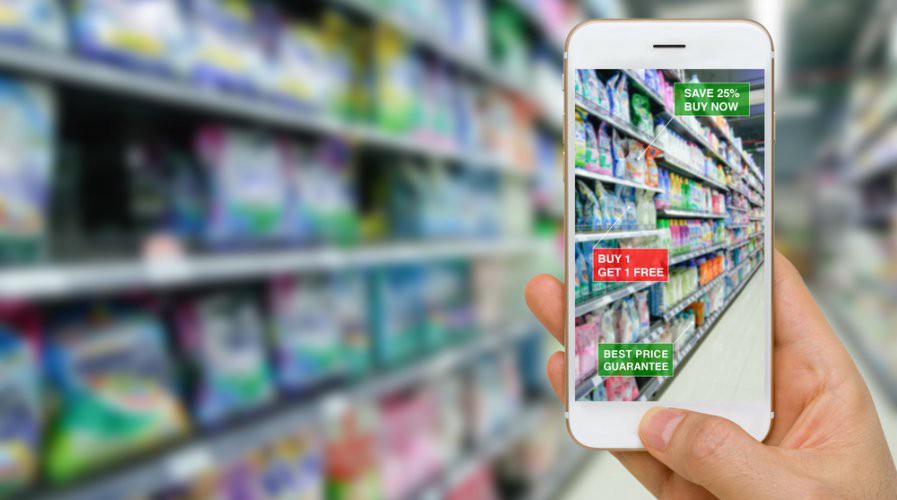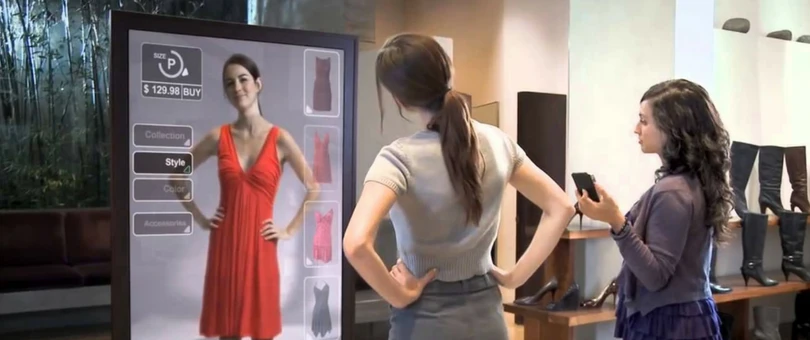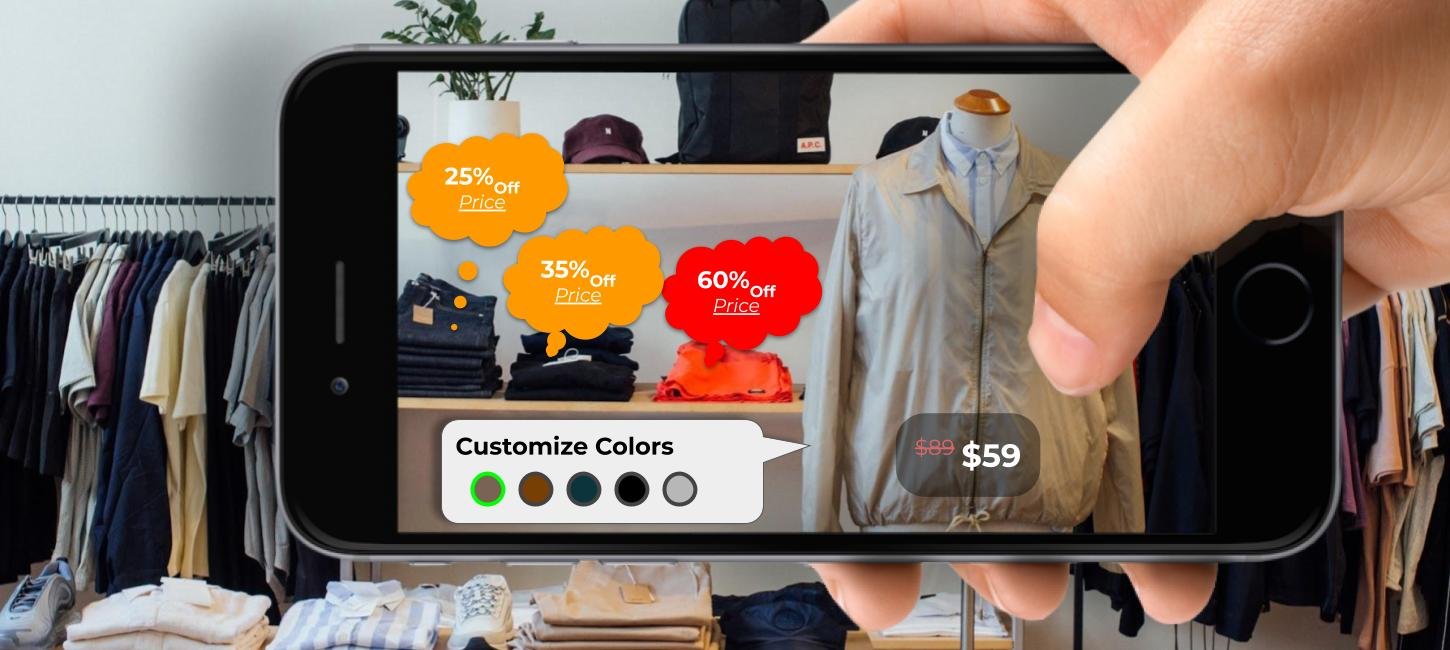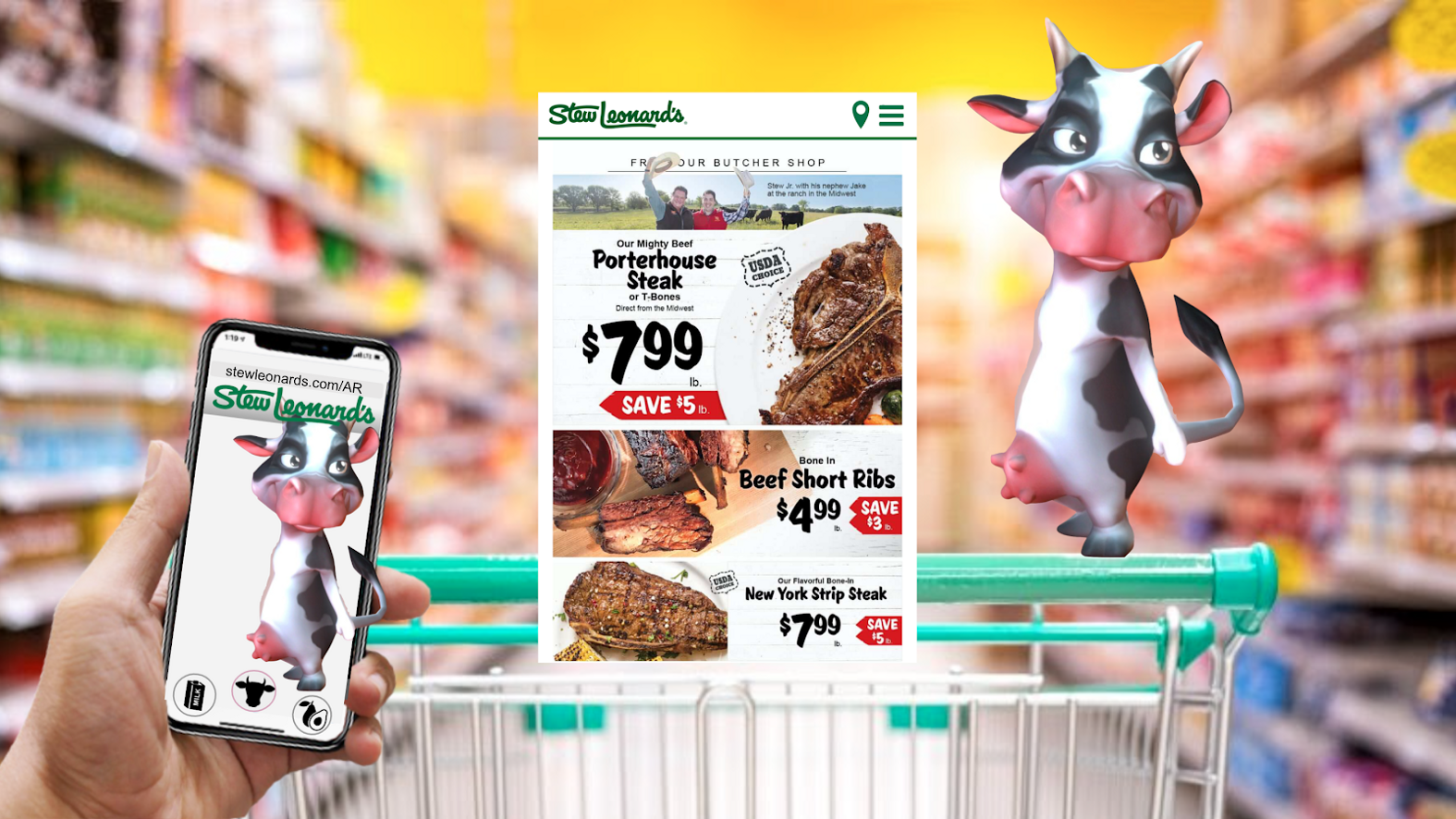From coupons to mascots and everything in between, we take a deep dive into leveraging WebAR for interactive retail.
Shopping and sharing has never been easier. Even before entering a store, shoppers are interacting with brands on social media and through user generated content. However, shoppers still crave the social experience of going to in-store retail locations.
How can you leverage WebAR to bring interactive destinations to audiences in-store and online? How can your brand stand out in a wall of infinite content?

In this blog post we will look at how to capitalize on shopping trends with WebAR, capturing the value of rewards and coupons, reigniting virtual influencers and mascots, and the key performance indicators of WebAR engagement.
Strong brands have strong characteristics that are often embodied by virtual influencers and mascots who, when done right, offer a genuine connection to audiences.
Shopping Trends
At the moment of inspiration, WebAR offers the opportunity to power one-click interactive experiences that capture the attention of an audience who is already genuinely interested in shopping.
Even pre-COVID, online sales were projected to increase from 1.3 trillion in 2014 to 4.5 trillion in 2021 (Statista, 2019). Actively on the lookout for the best deals, 93% of millennials are also using their mobile devices to compare deals online and in-store (ReadyCloud).
With these trends only accelerating as a result of COVID-19, digital shoppers are purchasing more goods online and sharing tips, insights and advice with friends and family — a trend so strong that over 91% of Americans are sharing exclusive offers with their friends and family (Kelton).
As 86% of millennials report that promotions and discounts are influential on purchases (Lab42), next we look at how to leverage WebAR for virtual rewards with real results.

Virtual Rewards with Real Results
The coupon has come a long way. It was first introduced in the early 1900s as a marketing gimmick that provided consumers with a discount or rebate on various products to attract them to specific brands and retail locations.
More recently, PayPal acquired shopping and rewards platform Honey for $4B, enabling PayPal’s network of 24 million merchant partners to offer targeted and more personalized promotions to consumers as a means of acquiring new business and driving sales.
Today, WebAR can capture the immediate excitement of offers and rewards by coupling them with the ability to interact and transact directly from fun and engaging browser-based experiences. In this way, WebAR becomes a convenience machine available to the 94% of Americans who say they would take advantage of an exclusive offer provided by a brand that is not typically offered to the general public (Kelton).
In 2016, 307 billion coupons were distributed throughout the United States. Despite the abundance of offers, only 2 billion of these deals were redeemed in the same year — with 64% redeemed at restaurants or retail stores (Statista Research Department, April 5 2019).
Every moment that passes between the initial discovery of the deal, the less likely that the coupon will be redeemed. In fact, only 30% of shoppers redeem a digital coupon within 24 hours (Inmar). So what if we could activate the value of the 305 billion deals intended for in store redemption that are left on digital shelves?
Using WebAR, we can combine an AI driven system to overlay coupons on any object. Consumers can engage with virtual goods, complete quizzes or questionnaires for additional rewards, perform contactless interactions with products, learn about new incentives, collect loyalty points, participate in sweepstakes and become immersed in gamified shopping experiences. The more points and coupons used, the more unlockable rewards and exciting perks and experiences that become available on offer.
By engaging with a brand, an audience also becomes more familiar with its voice, and what better way to open a dialogue between consumer and brand than through virtual influencers and mascots?
Powering Virtual Influencers and Mascots
Strong brands have strong characteristics that are often embodied by virtual influencers and mascots who, when done right, offer a genuine connection to audiences.

The Aflac Duck, Fidoo, the Geico Gecko, and Bumblebee who represented the Chevrolet Camaro as a part of cross-promotion with the Transformers film series, are just a few of the characters we are familiar with from television and YouTube commercials.
As marketing budgets are shifting to digital at an exponential rate, AR revenue continues to accelerate as it becomes a part of our everyday virtual shopping behavior in the form of seamless and universal URLs that connect people to the physical world.
Consumers can interact with 3D content, enter contests, and personalize shopping experiences. With WebAR, shopping is no longer a passive experience, it’s an interactive journey. It is time to rethink the scroll and click web format. Today, people are choosing to interact, transact and generate revenue in three dimensions.

Leveraging WebAR for Interactive Retail In-Store and Online
Unlike many advertising campaigns, even digital, WebAR rollouts can be updated quickly and easily to deliver new and highly engaging experiences to customers wherever they are.
As covered in “How AR will Redefine Marketing Benchmarks”, WebAR means that audiences are more likely to check out, there is increased satisfaction with 3D shopping experiences, and lower return rates. For example, as seen with ShopifyAR, AR has boosted conversion rates by 200%, and reduced returns by 40% (VNTANA).
Our own case studies also show impossible engagement results. In “Five Reasons Why Your Brand Needs an AR Strategy Right Now”, we go into the details of our partner activation bringing Warner Bros.’ audience into the dark world of Pennywise with WebAR — an experience that boasted a 49% completion rate, with 8% watching the trailer, 9% of users repeating the experience, and 6% opening the ticketing link. In contrast, successful conversion rates for marketing content averages at 2%.
These socially driven WebAR activations power interactive destinations in-store and online, where consumers can shop, share, view goods and services, place objects in their home, zoom in and out and one-click to purchase, all from the very first moment of encountering a brand.
As seen above, brands can also monitor engagement with traditional media KPIs to track the performance of these forward thinking campaigns.
These are just a few of the ways that WebAR can be used to capitalize on shopping trends, capture the value of rewards and coupons, and reignite engagement with virtual influencers and mascots.
If you would like to learn more about bringing WebAR to your retail store, you can contact our team on LinkedIn.
Engage & Monetize Your Audience with Immersive WebAR Experiences
Be the first to try Geenee WebAR